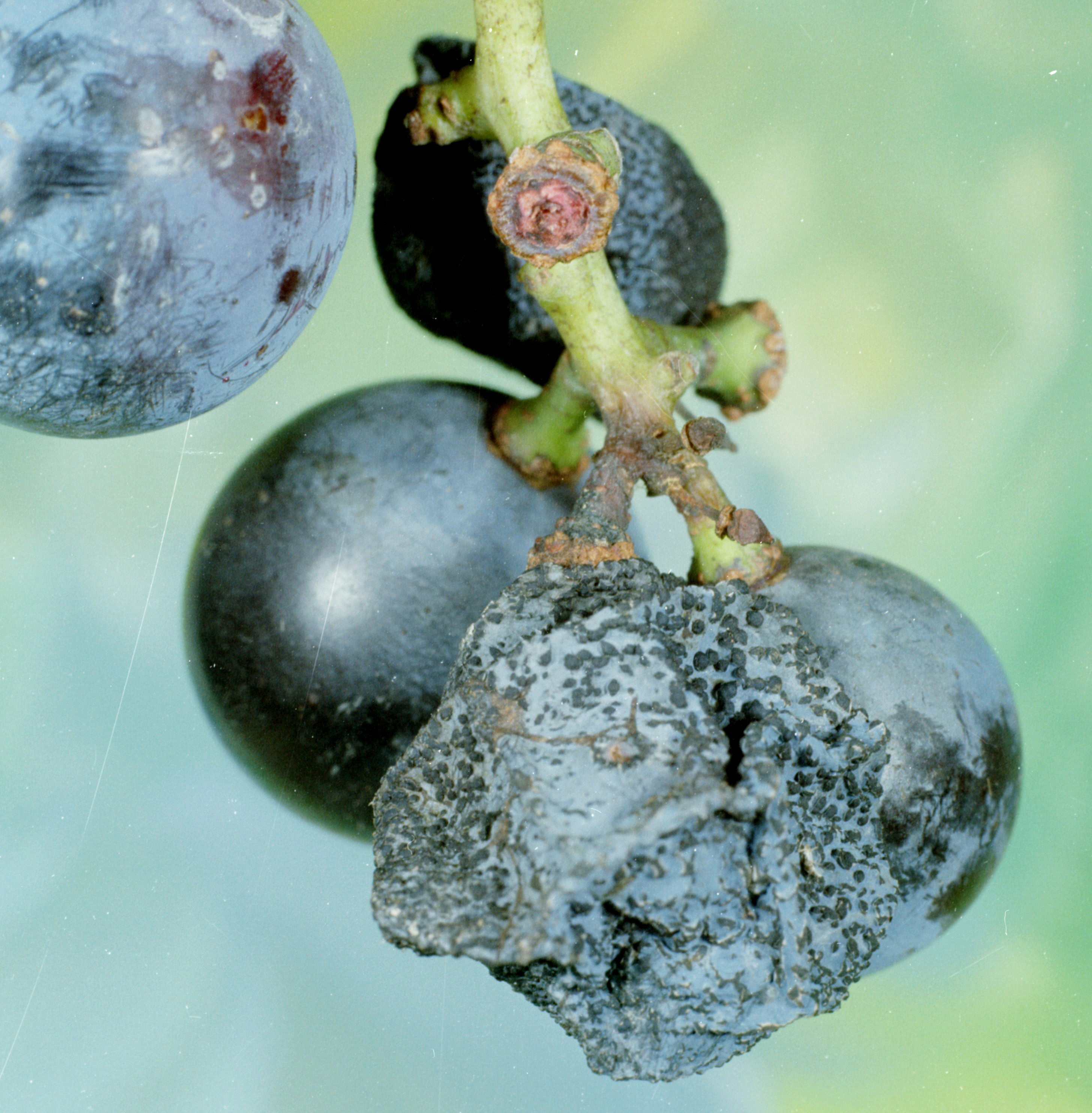Bitter Rot of Grapes
Return to Diseases
Bitter rot (Greeneria uvicola, syn Phyllostictina uvicola) is caused by a weakly pathogenic fungus. Any damaged fruit or green tissues can become infected, particularly those injured by cold or insects. Pedicels are infected by rain-splashed spores soon after flowering; once ripening begins, the infection moves into berries. Concentric rings of rough, corky sporulation (acervuli) become visible as berries reach full size; berries soften or drop or may dry up and hang onto vines. Infected berries may resemble black rot or ripe rot. Rotted fruit taste bitter and can affect wine flavor. Shoot infections may girdle tissue and cause dieback, especially in V. vinifera. The fungus overwinters in fallen leaves and berries, as well as in woody shoot lesions.

Bitter rot and visible acervuli on fruit.
(Photo: Clemson - USDA Cooperative Extension Slide Series, Bugwood.org)
Management:
- Practice proper sanitation (remove infected tissue).
- Increase air circulation to encourage drying of plant tissues (pruning, thinning, spacing, managing weeds).
- Manage diseases and insects.
- Avoid wounding.
